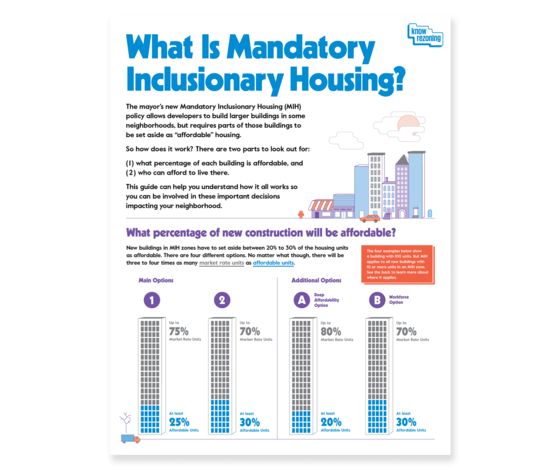New York City’s zoning laws control what can and can’t be built in different neighborhoods. When the city changes (or rezones) a neighborhood to allow for bigger residential buildings, a policy called Mandatory Inclusionary Housing (MIH) requires developers to set aside parts of their buildings as “affordable housing.” But how does it work? And who can actually afford to live there?
To help communities experiencing rezonings understand MIH, we created What is Mandatory Inclusionary Housing? with our community partners throughout the city and design studio L+L. The foldout explains all you need to know about how MIH works and how you can get involved in the process.
What Is Mandatory Inclusionary Housing? is being distributed by advocacy groups across the city who are organizing community members in neighborhoods going through a rezoning. It was created through CUP’s Know Rezoning initiative to support historically marginalized communities in New York City experiencing rezonings.
Click here to see the poster and get your own copy.




